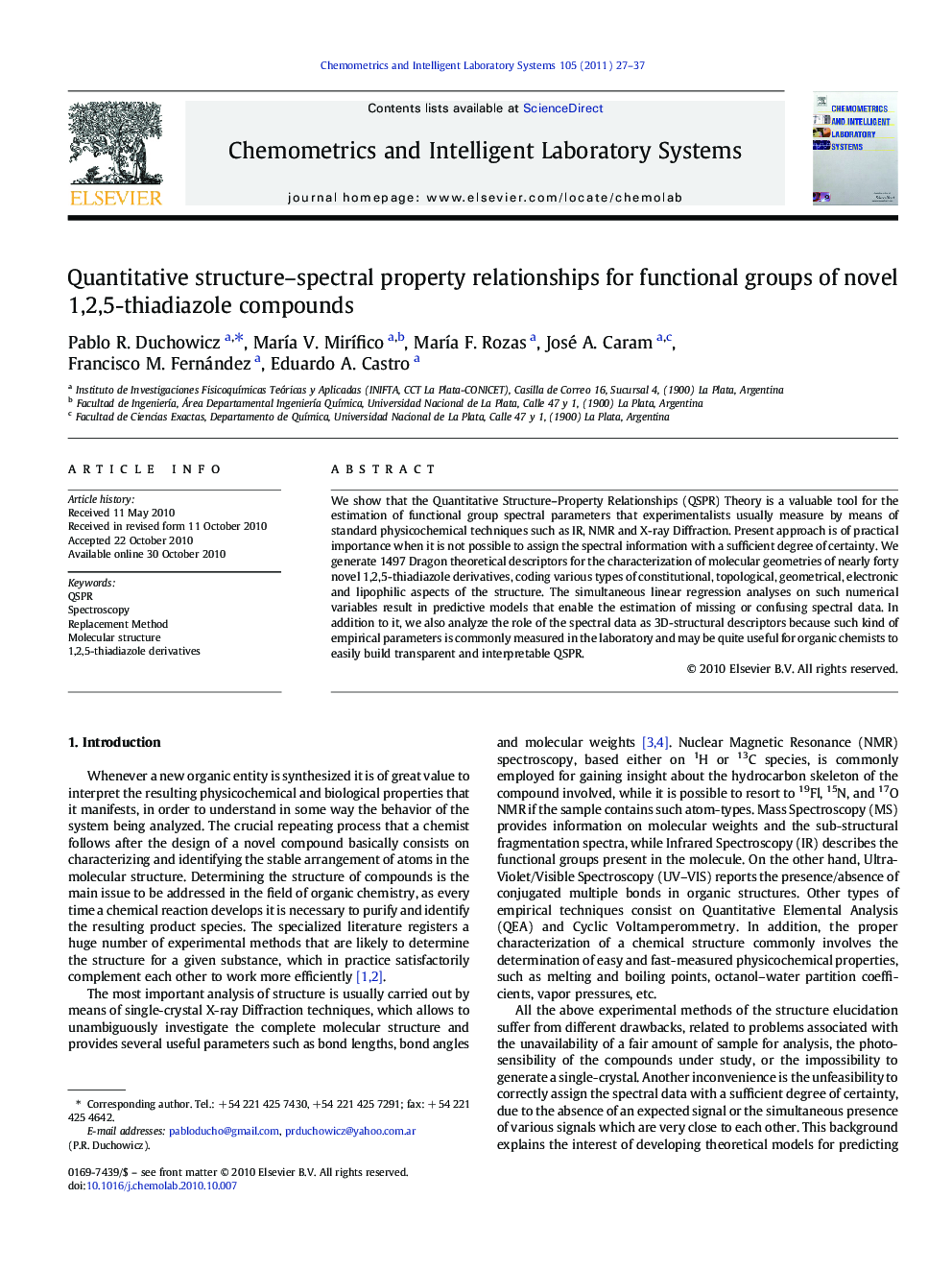| Article ID | Journal | Published Year | Pages | File Type |
|---|---|---|---|---|
| 1181271 | Chemometrics and Intelligent Laboratory Systems | 2011 | 11 Pages |
We show that the Quantitative Structure–Property Relationships (QSPR) Theory is a valuable tool for the estimation of functional group spectral parameters that experimentalists usually measure by means of standard physicochemical techniques such as IR, NMR and X-ray Diffraction. Present approach is of practical importance when it is not possible to assign the spectral information with a sufficient degree of certainty. We generate 1497 Dragon theoretical descriptors for the characterization of molecular geometries of nearly forty novel 1,2,5-thiadiazole derivatives, coding various types of constitutional, topological, geometrical, electronic and lipophilic aspects of the structure. The simultaneous linear regression analyses on such numerical variables result in predictive models that enable the estimation of missing or confusing spectral data. In addition to it, we also analyze the role of the spectral data as 3D-structural descriptors because such kind of empirical parameters is commonly measured in the laboratory and may be quite useful for organic chemists to easily build transparent and interpretable QSPR.
